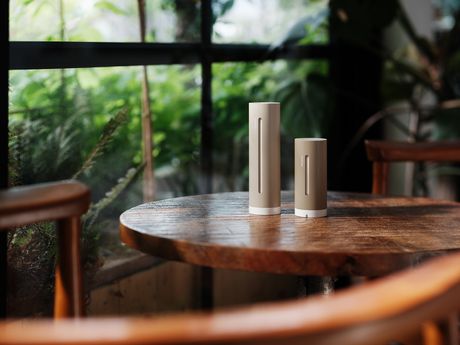
Netatmo presenta la nuova Stazione Meteo ORIGINAL

Fino al 50% di sconto su una selezione di prodottiAcquista

In Italia non vi è un vero e proprio obbligo formale secondo cui le abitazioni private debbano essere dotate di un sistema di sicurezza antincendio. Spetta, infatti, al proprietario della struttura o al datore di lavoro decidere di prevedere un impianto di allarme o sistemi di rilevazione antincendio, in base alla valutazione dei rischi connessi alla struttura e all’ambiente. L’installazione di sistemi di rilevazione e allarme antincendio diventa però obbligatoria in caso di strutture “aperte al pubblico”, quali strutture alberghiere, ospedali e strutture sanitarie, alberghi e attività commerciali, impianti sportivi e locali pubblici.
In generale, però, i dispositivi di sicurezza antincendio hanno un minimo comune denominatore, ovvero:
Nel caso di sistemi di sicurezza antincendio più complessi vi sono ulteriori componenti che fanno parte dell’apparato di sicurezza antincendio:
Ma come funziona, in poche parole, l’allarme antincendio e tutto il sistema ad esso connesso? Gli allarmi sonori servono per avvertire giorno e notte del pericolo e del propagarsi di un incendio. Questo dispositivo acustico non ha solo il compito di avvisare chi è direttamente in pericolo o chi si trova in quel momento nell’area circoscritta, ma anche chi ti sta intorno, ovvero colui che potrebbe essere potenzialmente a rischio. Un incendio può, infatti, propagarsi molto velocemente: per questo sono necessari rilevatori, sistemi di protezione e un diffusore acustico adeguati. Il rilevatore di fumo interviene prima di tutti. Serve, appunto a rilevare la quantità di fumo presente nell’aria e a far scattare automaticamente l’allarme antincendio, nel caso i valori di fumo rilevati eccedano il limite minimo consentito. Il grilletto manuale, sotto forma di pulsante (la famosa “scatola rossa”), permette di attivare l’allarme manualmente, se necessario. È utile ed è presente soprattutto nei grandi stabilimenti. Insieme a questi dispositivi del sistema antincendio, vi sono altri accessori che ti consentono di agire una volta che l’incendio viene rilevato, in modo da ripristinare la sicurezza velocemente o, eventualmente, prestare un primo soccorso in attesa dei Vigili del Fuoco. Di cosa stiamo parlando? Degli estintori, immancabili in ogni kit antincendio degno di questo nome!
Il Rilevatore di Fumo Intelligente Netatmo è un rilevatore fotoelettrico (ottico) di fumo che migliora la sicurezza della tua casa. Grazie alla durata decennale della batteria del Rilevatore di Fumo Intelligente Netatmo e alla sua funzionalità check automatico, non devi più preoccuparti di cambiare la batteria o verificare se il rivelatore funziona correttamente.
Gli allarmi antincendio non sono tutti uguali. Ogni edificio ha una tipologia di allarme più adatta, in base alla grandezza, a cosa ospita ed alla struttura stessa dell’edificio. In generale, i sistemi di sicurezza antincendio, progettati per un uso autonomo, tendono ad offrire migliori prestazioni ed una migliore protezione.
Quali tipi di allarme esistono e come vanno utilizzati?
Una caratteristica tutt’altro che irrilevante è il livello sonoro, quindi il volume e l’intensità dell’allarme stesso, specifico a seconda della grandezza degli spazi e della funzione dei diversi ambienti. Secondo la norma UNI 9795 del 2013 il livello acustico percepibile deve essere di 5dB(A) al di sopra del rumore ambientale, pertanto il livello acustico percepito da chi occupa l’edificio deve essere compreso tra 65dB(A) e 120 dB(A).
Esistono diversi tipi di allarmi antincendio: il sistema di allarme antincendio convenzionale è conosciuto come allarme antincendio a “quattro fili” ed è utilizzato, prevalentemente in piccole proprietà. La sua funzione è quella di suddividere la casa o l’edificio in zone di rilevazione cablate. In questo caso i rilevatori e i punti di chiamata di ogni zona sono collegati tramite cavi in circuiti specifici, che si legano direttamente e singolarmente al pannello di controllo. Generalmente questo sistema è costituito da un'unità di controllo autonoma a batteria, un innesco manuale e un diffusore acustico. Nel caso di grandi proprietà o edifici commerciali con complessi sistemi di rete si predilige l’utilizzo di sistemi di allarme analogici o wireless. Questi due apparati sono certamente più costosi e articolati, ma hanno maggiore flessibilità rispetto ai sistemi di allarme convenzionali. La connessione tra le parti sia essa tramite cavi indirizzabili o senza fili, cioè wireless, è migliore e la rilevazione dell’allarme è più precisa: il pannello di controllo del fuoco, che riceve le informazioni dai diversi dispositivi dislocati nell’edificio, è in grado di individuare la posizione esatta dell’incendio, oltre ai fattori che lo hanno causato, al fumo, alla temperatura e così via.
La scelta di un sistema di rilevazione e di allarme antincendio può apparire un’impresa difficile, ma non impossibile. Le diverse tipologie di impianti sono pensate appositamente per ogni contesto e ogni edificio, sia esso un’abitazione, un appartamento privato, un’azienda oppure grandi impianti di produzione.